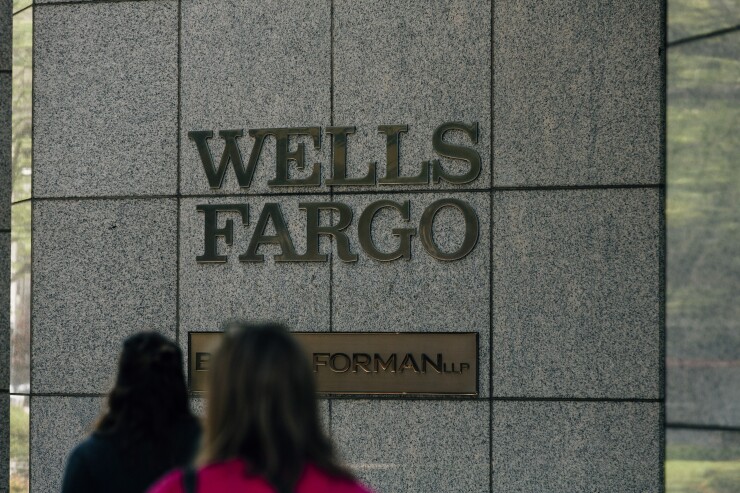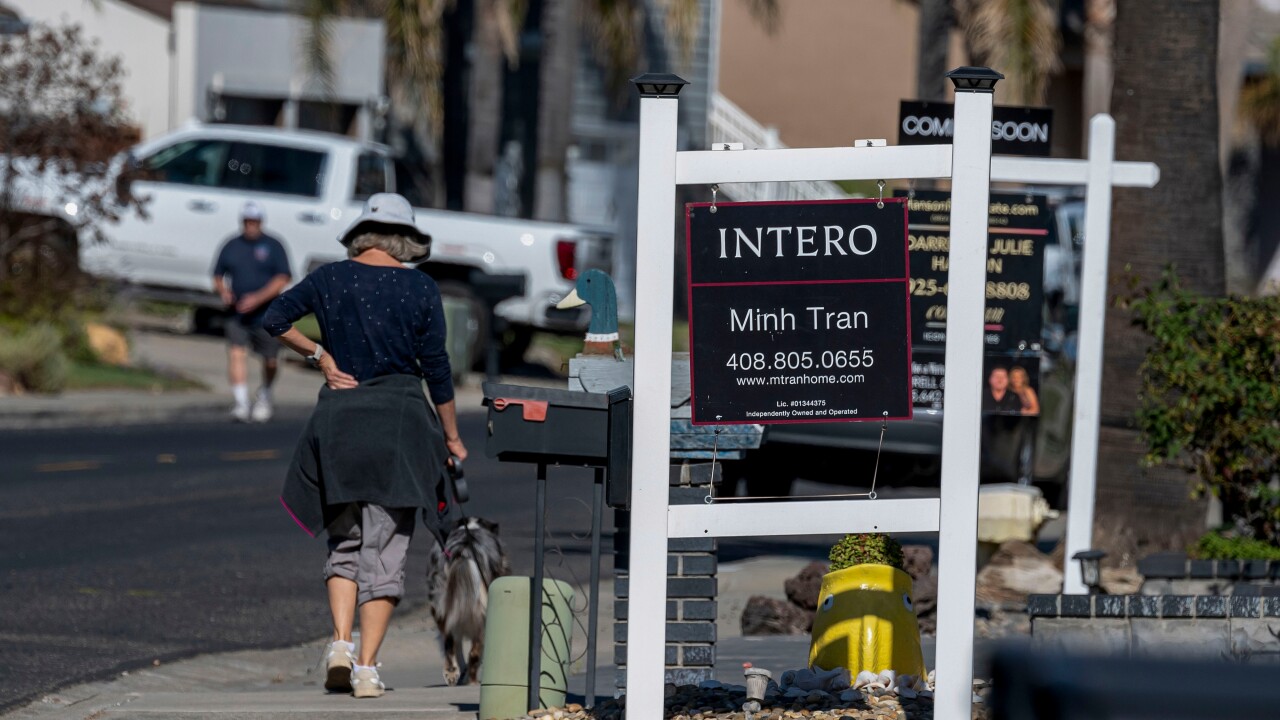Want unlimited access to top ideas and insights?
Wells Fargo agreed Friday to pay $1 billion to settle claims it overcharged customers for auto insurance and home loans.
The penalty came after
The fine comes on top of

In a consent settlement with the Consumer Financial Protection Bureau and the Office of the Comptroller of the Currency, Wells agreed to pay $1 billion to the CFPB and $500 million to the OCC. However, under the terms of the deal, the $500 million payment to the Comptroller's Office is credited to the CFPB's assessment, meaning the bank will ultimately pay $1 billion.
The fine is the first major action against a big bank by the Trump administration; the Fed's action in February was undertaken by then-Chair Janet Yellen, an Obama appointee. The investigations into Wells' practices date to at least 2012.
It also marked acting CFPB Director Mick Mulvaney's first enforcement action since taking office in November, after doubts that he would penalize Wells at all. (President Trump's tweet came in response to news reports that Mulvaney wanted to drop action against Wells, a charge both the president and Mulvaney denied.)
“I am especially pleased that we were able to work closely and effectively with our colleagues at the OCC, and I appreciate the key role they played in the negotiations,” Mulvaney said in a press release. “As to the terms of the settlement: we have said all along that we will enforce the law. That is what we did here.”
The OCC said it found six major deficiencies at Wells, including a failure to establish effective first and second lines of defense; an inability to execute on a comprehensive plan to address compliance risk management deficiencies; and a failure to fill mission-critical staffing positions in its regulatory compliance risk management unit with individuals who possess the requisite "knowledge, skills, and abilities to perform assigned duties."
Regulators said the penalty reflects, among other things, the bank's failure to develop and implement "an effective enterprise risk management program to detect and prevent" unsafe and unsound practices, according to the OCC. The agency said it reserved the right to take additional supervisory actions, including imposing business restrictions or making changes to Wells' management and board of directors.
The OCC said the penalty was assessed based on "the severity of the deficiencies and violations of law, the financial harm to consumers, and the bank’s failure to correct the deficiencies and violations in a timely manner."
The consent order said Wells failed to implement a reliable compliance risk assessment and testing program; inadequately reported to its board on compliance concerns; and, since 2014, did not adequately develop and implement crucial elements of its compliance risk management program to potential unfair or deceptive acts or practices.
In response, Wells Fargo CEO Tim Sloan issued a statement that said the bank had "made progress on strengthening operational processes, internal controls, compliance and oversight, and delivering on our promise to review all of our practices and make things right for our customers."
“While we have more work to do, these orders affirm that we share the same priorities with our regulators and that we are committed to working with them as we deliver our commitments with focus, accountability, and transparency," Sloan said. "Our customers deserve only the best from Wells Fargo, and we are committed to delivering that.”
More than 50,000 customers will receive refunds totaling more than $10 million, the consent order states. Wells is required to identify and remediate all affected customers. It also may have to hire an independent third party or have an internal audit validate the plan and its effectiveness.
Wells said it will adjust its first-quarter preliminary financial results by an additional $800 million, which is not tax-deductible. It said it would reduce reported first-quarter 2018 net income by $800 million, or 16 cents per diluted common share, to $4.7 billion, or 96 cents per diluted common share.
Under the consent orders, Wells Fargo will also be required to submit for review by its board plans detailing its ongoing efforts to strengthen its compliance and risk management, and its approach to customer remediation efforts.
From June 2012 to October 2016, Wells' Dealer Services unit improperly forced auto loan borrowers into force-placed insurance policies underwritten by its third-party vendor, National General, that charged premiums, interest and other fees to borrowers' accounts — even after borrowers demonstrated they already had auto insurance. Some borrowers fell delinquent, while others had their vehicles repossessed.
On home loans, from September 2013 to March 2017, Wells improperly charged customers fees for extending mortgage interest rate locks even if the bank had caused the loan closing to fail, which constituted an unfair act or practice.
Wells became the poster child for bad banking practices in 2016 after regulators found that it had fired 5,300 employees who had opened as many as 3.5 million checking and credit card accounts that consumers never asked for.
L.A. City Attorney Mike Feuer has called Wells a "fee-generating machine" that operated a high-pressure sales culture in which employees were threatened with losing their jobs if they failed to meet rigid sales quotas.
Wells' abuses were first detailed in a 2013 article in the Los Angeles Times by E. Scott Reckard.
In February, the Federal Reserve dropped the hammer on Wells by restricting the bank's future growth through asset limits and forcing it to remove four board members. Wells cannot grow above $195 billion in assets until its corporate governance and internal controls improve.
Yellen announced the unprecedented action against Wells on her final day, noting the "pervasive and persistent misconduct" at the bank.
Yellen said "robust and comprehensive reforms" had to be put in place to stop abuses.
Wells is hardly out of the woods — its wealth management and foreign exchange trading units are under investigation.
Wells' reputational crisis and downfall can be traced to the
Reuters first reported last week that the CFPB and OCC were considering a fine of up to $1 billion, and Wells confirmed that regulators proposed the 10-digit penalty.





